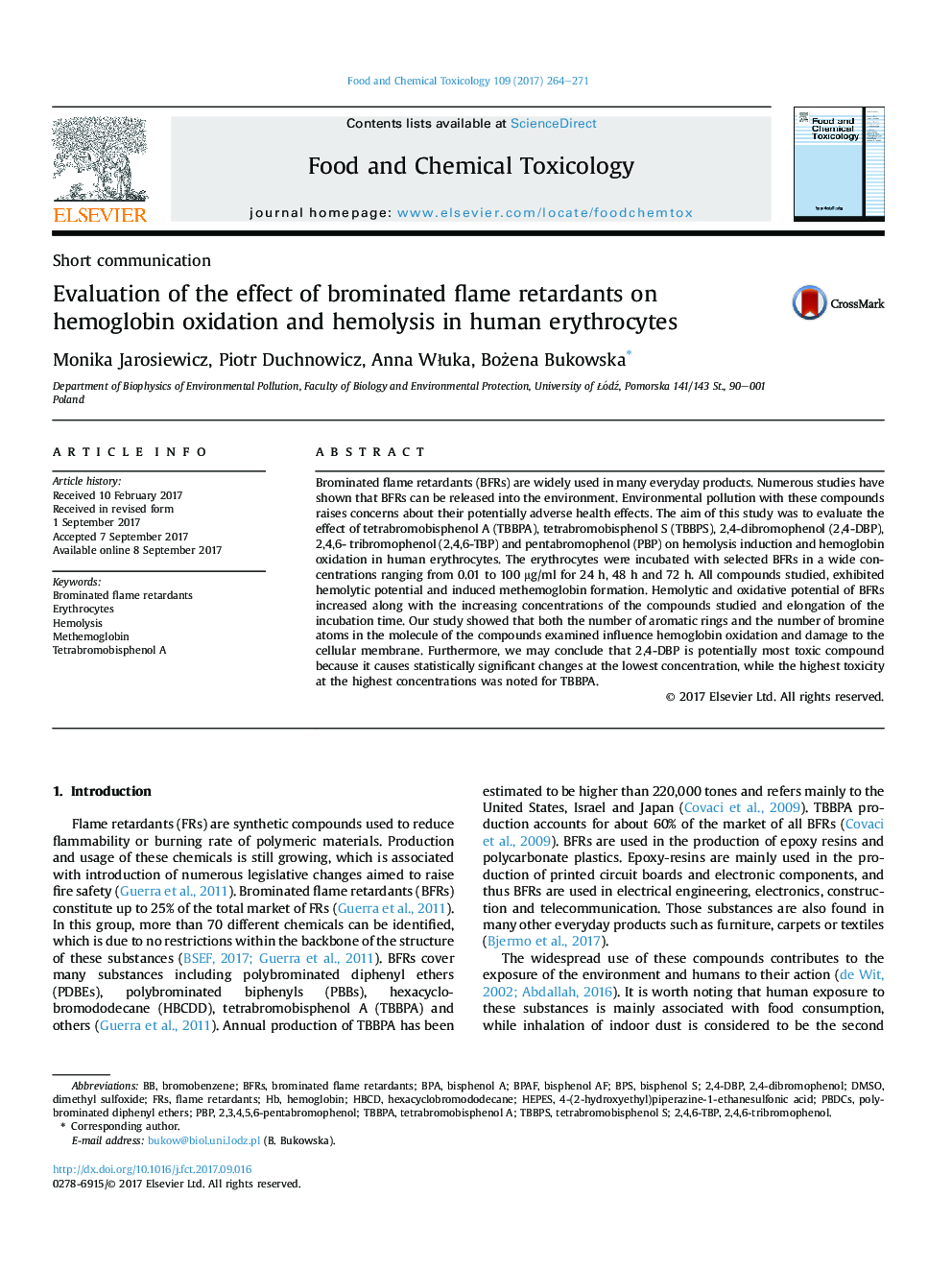| Article ID | Journal | Published Year | Pages | File Type |
|---|---|---|---|---|
| 5559978 | Food and Chemical Toxicology | 2017 | 8 Pages |
Brominated flame retardants (BFRs) are widely used in many everyday products. Numerous studies have shown that BFRs can be released into the environment. Environmental pollution with these compounds raises concerns about their potentially adverse health effects. The aim of this study was to evaluate the effect of tetrabromobisphenol A (TBBPA), tetrabromobisphenol S (TBBPS), 2,4-dibromophenol (2,4-DBP), 2,4,6- tribromophenol (2,4,6-TBP) and pentabromophenol (PBP) on hemolysis induction and hemoglobin oxidation in human erythrocytes. The erythrocytes were incubated with selected BFRs in a wide concentrations ranging from 0.01 to 100 μg/ml for 24 h, 48 h and 72 h. All compounds studied, exhibited hemolytic potential and induced methemoglobin formation. Hemolytic and oxidative potential of BFRs increased along with the increasing concentrations of the compounds studied and elongation of the incubation time. Our study showed that both the number of aromatic rings and the number of bromine atoms in the molecule of the compounds examined influence hemoglobin oxidation and damage to the cellular membrane. Furthermore, we may conclude that 2,4-DBP is potentially most toxic compound because it causes statistically significant changes at the lowest concentration, while the highest toxicity at the highest concentrations was noted for TBBPA.
